I love the deck-building mechanic. I know some people have gotten tired of it, but I really enjoy seeing the variations on the theme that people have come up with. Tom Cleaver’s Valley of the Kings is a particularly fascinating example of the genre—it involves the least building that I’ve seen in a deck-builder.
At a glance: Valley of the Kings is a deck-building game for 2 to 4 players, ages 14 and up, and takes about 45 minutes to play. It retails for $19.99 and is available now. (There are also rules for two solitaire variants available online.)
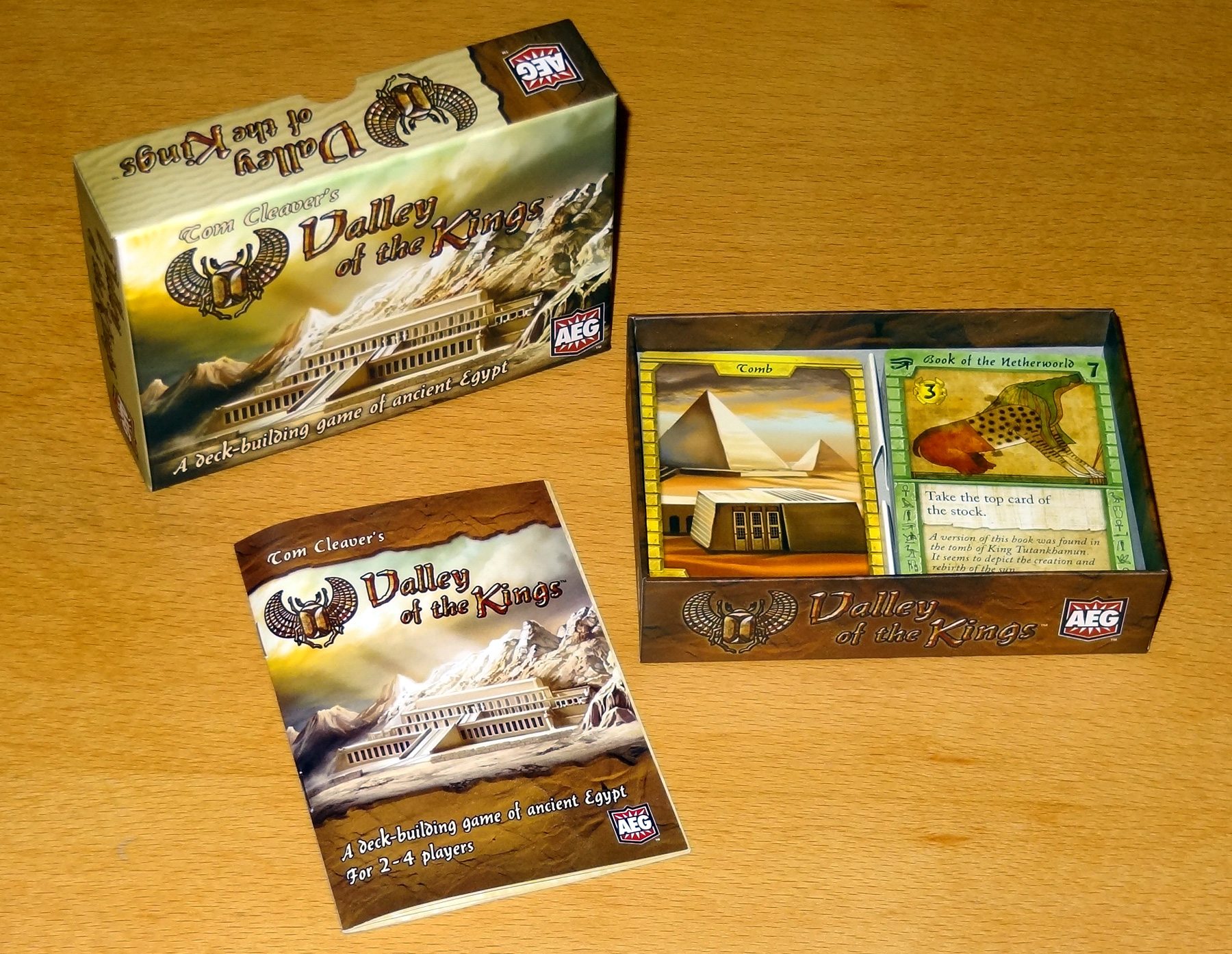
Components:
- 96 Artifact cards
- 4 Tomb cards
- 4 Reference cards
The other fascinating thing about Valley of the Kings is that the game has a hundred cards (and about half of those are starting cards), and that’s it. Most deck-building games come with hundreds of cards in a huge box. This one is in AEG’s line of small-box games, making it extremely portable.
The card quality is excellent, as you’d expect from AEG: linen finish with a nice snap. The graphic design on the cards can be a little busy, but it is fairly easy to tell the various types of cards part easily by the vivid border colors (and, for the color blind, the icons in the top left as well as the identifying text at the bottom left). Each card also has flavor text below the card’s ability text, which can be a bit much. I might have preferred having the card category and point value be a little larger, but those who want more about Egyptian history will be pleased.
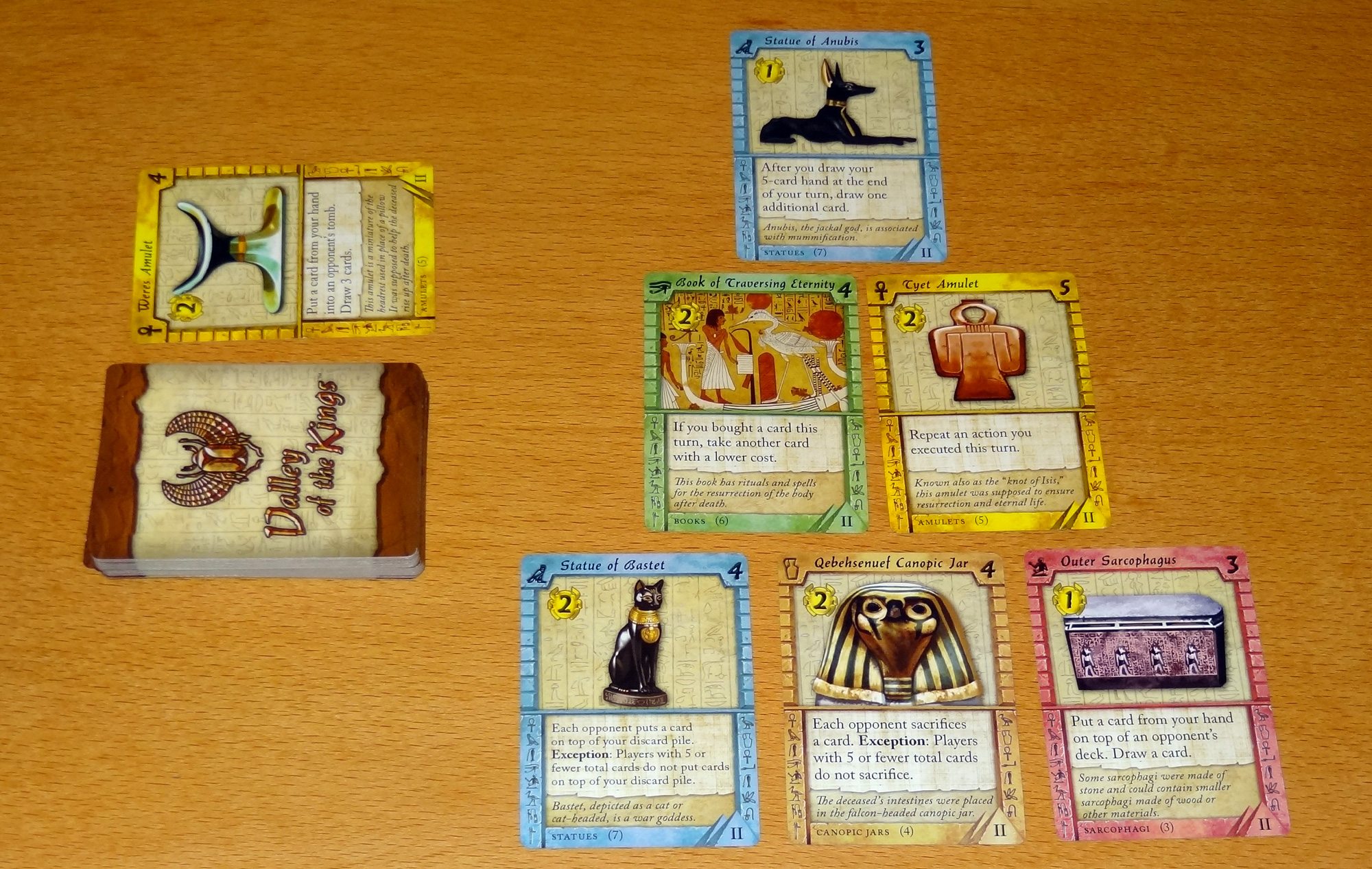
How to play
The full rulebook is available for download as a PDF.
The object of the game is to get the most points by the end of the game—however, you only get points for cards that are in your Tomb, not those that are in your deck, and the types of cards that you have in the Tomb also affect your score.
To set up, each player takes a Tomb card and a deck of starting cards. There are three “levels” of cards, marked in the lower right corner of the cards. Starting cards are all Level I. The Level II and Level III cards are shuffled separately, and then stacked to form the stock (with Level III at the bottom). Then, six cards are dealt out to the table to form a pyramid. Finally, one card is flipped over to start the boneyard, which is where cards go when they’re sacrificed.
Whenever cards are removed from the Pyramid, it “crumbles.” Cards from the middle row drop down to fill in a gap in the base, the card from the top row drops down to the middle row, and a card is drawn from the stock and placed at the top of the pyramid.

Each player sets the Tomb card to the side, shuffles their deck of starting cards, and draws a hand of five cards.
On each turn, you Play Cards, Discard, Rebuild Pyramid, and Draw New Hand.
Play Cards: each card has multiple uses, but you may only use one purpose each time. Cards may be used for their gold value to buy other cards from the pyramid—the gold scarab icon in the upper left indicates how much gold a card gives you to spend, and the large number in the upper right corner of a card indicates how much it costs to purchase. You may only buy cards from the base of the pyramid (and then the pyramid crumbles), and purchased cards go into your discard pile.
You may also use cards for their action—simply play the card and follow the directions. You must perform as much of the card’s action as you can.
Finally, once per turn you may entomb a card by placing it into your tomb.
Discard: Once you’re done playing cards, you discard all of the cards in play (the ones you’ve used this turn), plus any cards remaining in your hand, into your own personal discard pile.
Rebuild Pyramid: If you made no changes whatsoever to the pyramid this turn, then you sacrifice any card in the pyramid by putting it in the boneyard, and then the pyramid crumbles as usual.
Draw New Hand: draw five cards.
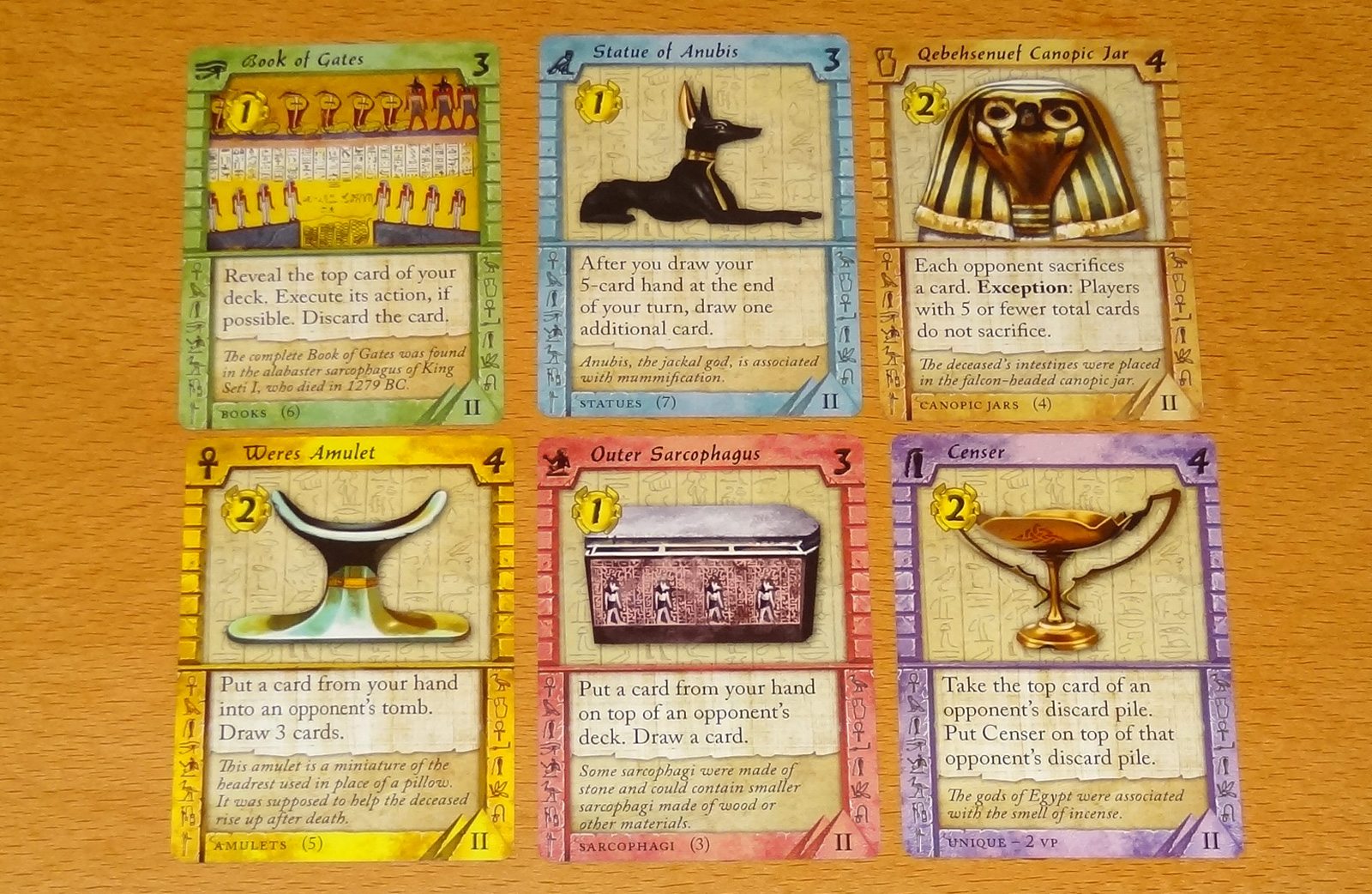
There are various types of actions available on the cards. Some will let you draw more cards or even take cards from your opponents. Others may force your opponents to discard or sacrifice cards, or give you extra actions. One of the starting cards, the Offering Table, protects you from discarding or sacrificing cards if you have it in your hand at the time. There are also cards that let you entomb cards—normally you get one free entomb action per turn, but these will give you additional entomb actions, sometimes at a cost.
The game ends when all three of these conditions are met: there are no cards in the stock, there are no cards in the pyramid, and everyone has had the same number of turns.
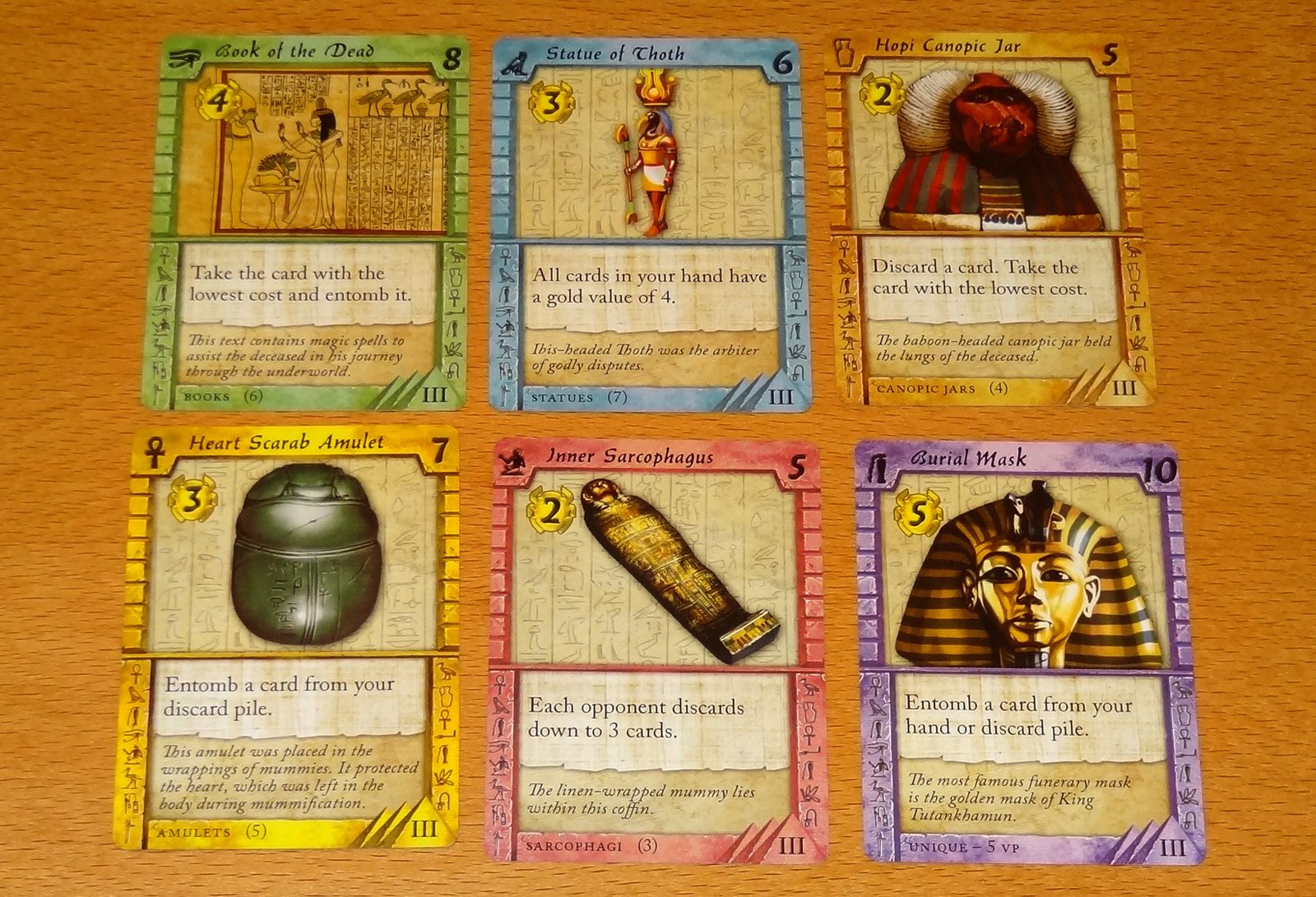
At the end of the game, you look at all of the cards in your Tomb. Starter cards are worth 1 VP each. There are also “Unique” artifacts (the purple borders) which have a VP value listed on them. Most of the cards belong to sets, however: Sarcophagi, Canopic Jars, Amulets, Books, or Statues. For these cards, you count up the number of different cards of each set you have, and square that number. So if you got three different Canopic Jars into your tomb, that would be worth 9 points. Each card shows how many different cards are in its set, and there are two copies of each of those, but duplicate cards in a set don’t count for any points.
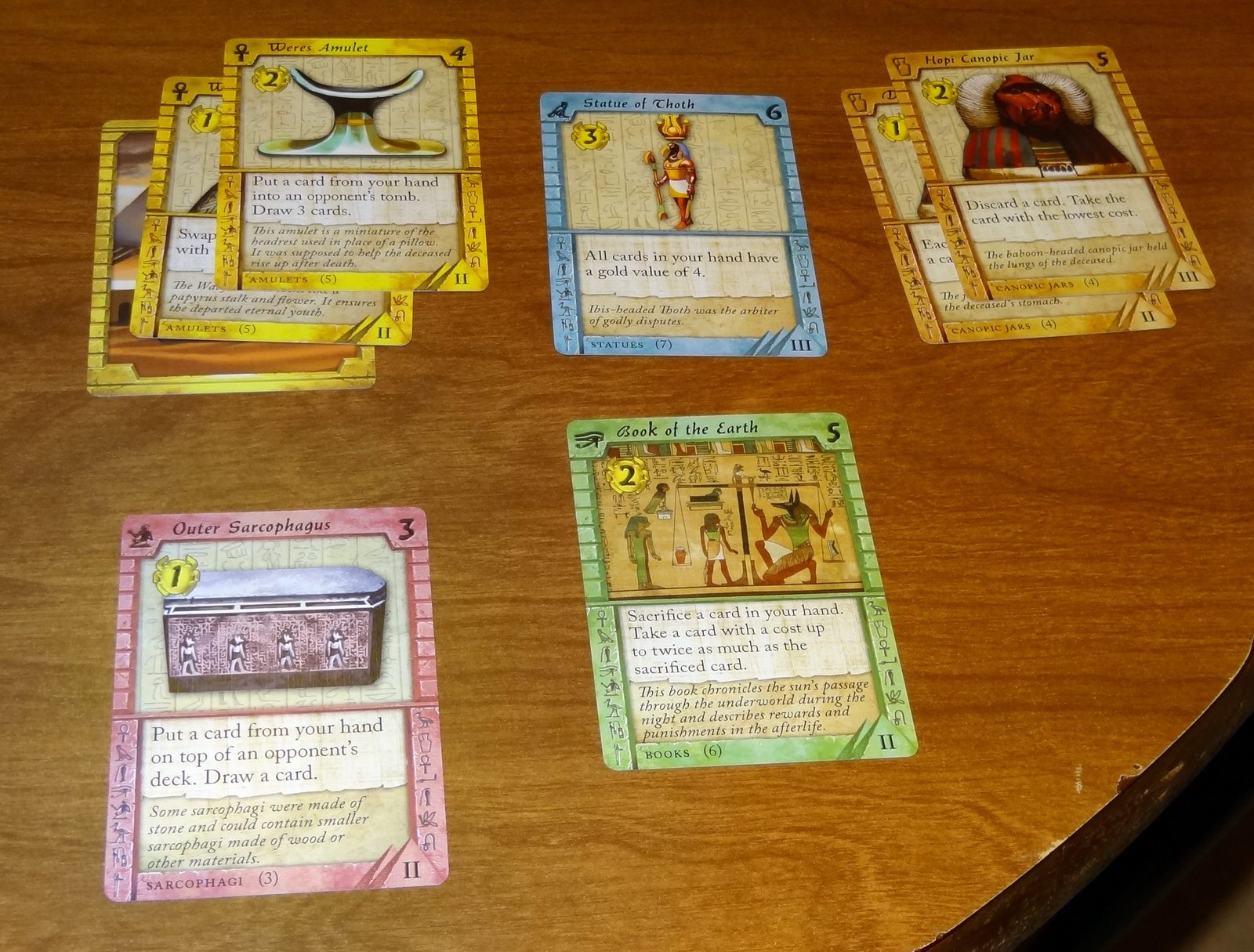
The player with the highest score wins. Ties go to the player with the fewest cards in the Tomb.
The Verdict
When I first saw the box cover for Valley of the Kings, I thought there must be some mistake. Deck-building games don’t come in tiny boxes like this, I thought. But after playing it, I’m really amazed by how much Tom Cleaver did with so little.
The first thing is the way that all the cards have three uses: money, actions, and points. In earlier deck-building games, those purposes are often separate cards. Some actions may give you money to spend, but there are also cards that are just money, or just points, and nothing else. Here, each time you play a card, you must choose between the three. And once you’ve used it for points by entombing it, it’s no longer cycling through your deck to be used again (other than a few cards that allow you to pull things out of your Tomb).
These choices get even harder as you acquire more valuable cards. The most expensive cards have very powerful actions—some of the Level III cards will let you take cards from the pyramid without even paying for them—but they’re also worth the most as money. But simply building your deck isn’t enough, because cards in your deck aren’t worth anything at the end of the game.
There are actions that don’t seem to make sense at first, because they allow you to put cards into other people’s decks or even their tombs, which seems like you’re helping them. But, again, if it helps you weed out less-powerful cards from your own deck, it can pay off in the long run.
In most deck-building games, you’re building up an engine that will eventually generate money or power so you can score points. Valley of the Kings is like trying to build an engine while you keep pulling out key parts and tossing them in a bin. What you take out of your deck is just as important—or even more important—than what you put into it. I’ve played games of Valley of the Kings where some players had only five cards left in their entire deck, so they were cycling through all of them each turn.
The pace of the game is really fascinating, too. In the first half people are trying to acquire cards that will allow them to get more money and better actions. Entombing cards at this point feels like crippling yourself because you need every penny and every action. But once those Level III cards show up, you know that the game is over the hill, and you better start putting cards into your tomb, if you haven’t already. Generally the players who lose realize that they waited too long to entomb cards, because they had nice combinations in their decks, just not in their tombs.
To sum up, I’m really impressed with Valley of the Kings. It’s quick to teach, a flash to set up, and plays pretty quickly, but is still filled with nice, meaty decisions to make on every turn. Right from the start you have card abilities rather than just low value currency, which is a nice change from many deck-building games. I’d recommend it to anyone who enjoys deck-building games but wants something fresh. I even have one gamer who doesn’t really like deck-building but loved Valley of the Kings. It’s definitely one that will find a spot in my travel bag, too.
For more about the game, visit the AEG website.
Disclosure: GeekDad received a review copy of this game.
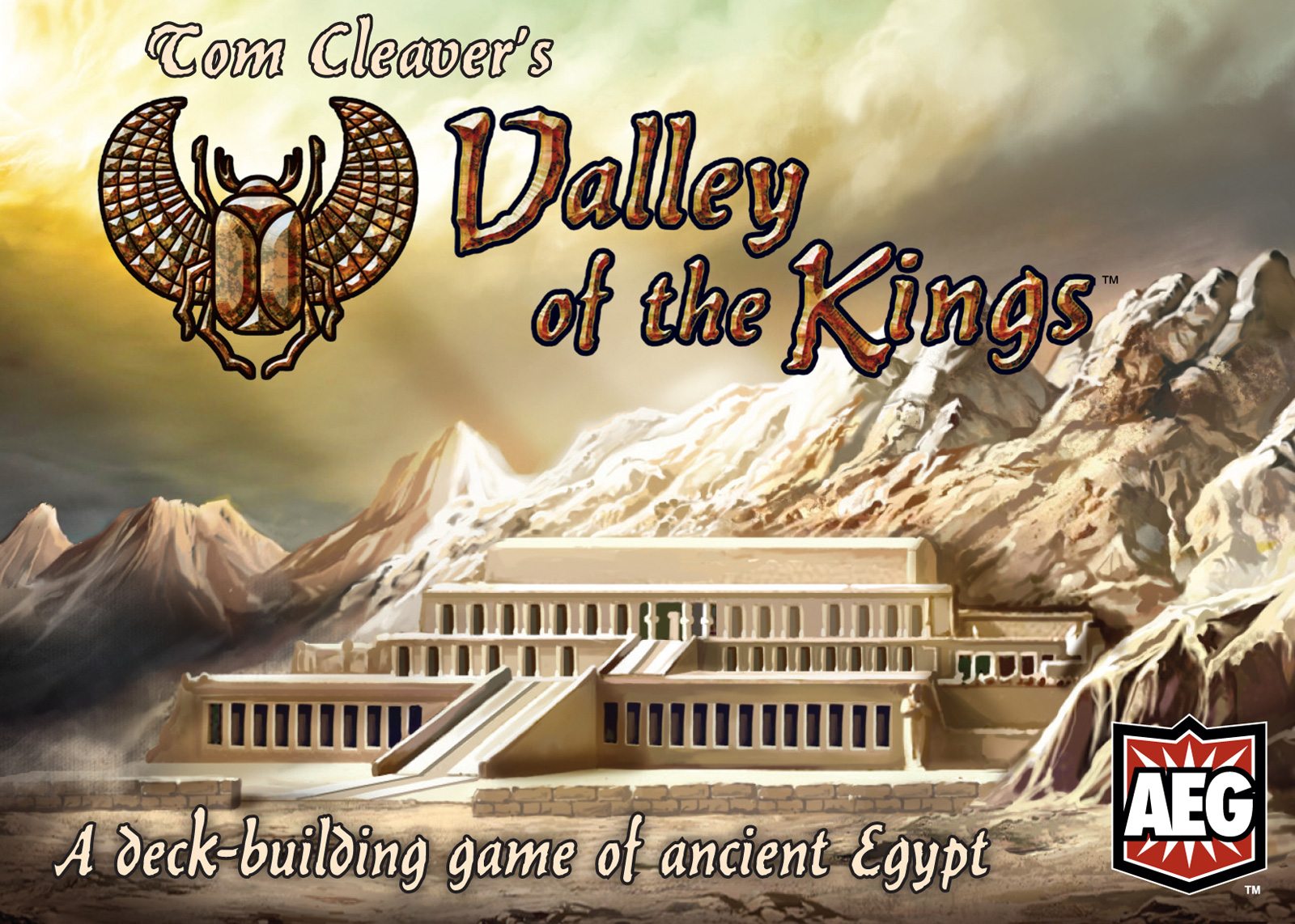



Just picked this up at Origins a month ago and haven’t played it yet – can’t wait to start playing it now! Thanks for the review!
Hey Geek Dad, thanks for reviewing my game. You did a fine job of describing how the game works. I’ll be at GenCon in August demoing Valley of the Kings for AEG. If you’re there, please drop by the AEG booth. I’d love to meet you.
Tom Cleaver